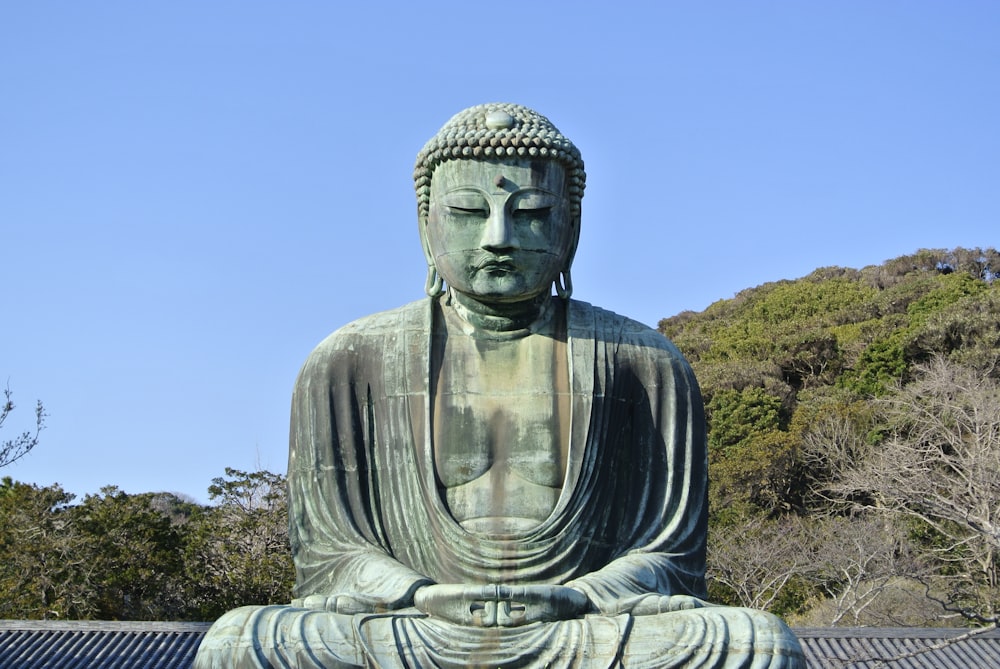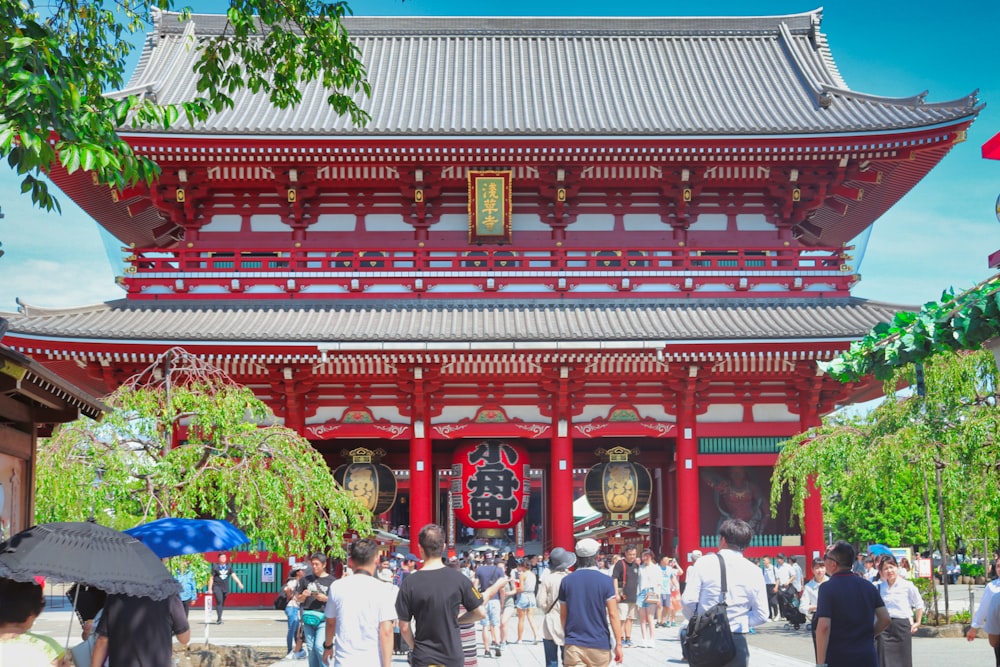Tabearuki is the act of eating while walking, but one thing that newcomers in Japan might notice is that you hardly see Japanese people doing this. In many other countries, this act is so normal that it isn’t even a thought, much less a concern. After all, eating while walking is convenient if you’re too busy to actually stop for a meal. And when you live in Japan, which expects its people to work long hours every day, you might assume that eating while walking could be a helpful practice — and a part of the Japanese culture.
But it’s quite uncommon to see here. Why is it discouraged in Japan? Is it taboo or a crime punishable by law? Are there any circumstances under which it’s okay to do tabearuki? Read on to learn more about why you can’t eati while walking in Japan!
Jump to:
- What is Tabearuki?
- Why is Tabearuki Frowned Upon in Japan?
- Why are Some Areas Taking a Formal Stance Against Tabearuki?
- Places and Times where Tabearuki is Acceptable
- Conclusion
What is Tabearuki?
Tabearuki (食べ歩き) means “eating while walking”. The word is a combination of two Japanese verb: 食べる (taberu), which means “to eat”, and 歩き (aruki), which means “to walk”. Sometimes, this also means trying out different food at different restaurants, similar to doing food tours or meal hopping.
Tabearuki is a frowned-upon practice that foreigners often have no clue about. Over the years, the topic has come up in my friendly conversations with Japanese people. Most people simply have the tacit cultural awareness that it’s considered gyougi ga warui (行儀が悪い) — bad manners or rude. It hardly ever occurs to them to delve deeper into the reasoning. But others have tried to figure out why and have given some insight. Two of the most popular speculations as to why Japanese people don’t generally eat while walking might surprise you.
Why is Tabearuki Frowned Upon in Japan?

Appreciating the Food
One reason Japanese people often give for not eating while walking is that there is a time and place for everything. Japanese culture is undoubtedly one that embodies that idea, especially in its cuisine. There is a deep appreciation and respect for the seasonality and the geographical origins of flavors and ingredients.
Can these flavors and ingredients truly be enjoyed while a person is in motion, focused on getting to their destination? Many Japanese people would say no, you should be seated or at least standing still while eating. This idea of appreciating food could even date back to WWII and its aftermath when the country suffered from extreme food shortages. Even rice was rationed. Thus, food was something to be cherished due to its scarcity. (1)
Keeping the Streets Clean
The second reason Japanese people often give for not partaking in tabearuki is that there is nowhere to dispose of food waste, plastic wrapping or containers after eating. A quick glance around while you’re walking outside in Japan will confirm that there are hardly any public trash receptacles. You either throw things away at a convenience store, find a trashcan next to a vending machine by luck, or stuff your trash in your bag until you get home.
Even in highly populated metropolises like Tokyo or Osaka, the streets are almost always clean. The sheer inconvenience of having to hold on to your trash is certainly enough to discourage folks from eating and walking. Further, Japanese people are hyperaware of causing trouble to others or making others feel uncomfortable in any way.
This is generally referred to as meiwaku (迷惑) in Japanese, and you can read more about that in a section of this post.
Imagine a visitor to an area leaving trash or food messes behind. What we want to avoid is having local residents clean up later. Not only is it unfair, but it’s a nuisance. Over time, residents and tourists in that area would come to be at odds with each other. In fact, there are a couple of areas in Japan that are trying to curb tabearuki for this very reason.
Why are Some Areas Taking a Formal Stance Against Tabearuki?
In most cases, tabearuki is an unwritten social norm, like a rule that everyone in Japanese society is expected to know without being explicitly told to.
However, a few areas of Japan are trying to discourage tabearuki in official ways because it’s becoming an annoyance. A CNN article reported that Kamakura issued an ordinance in 2019 asking tourists not to eat while walking. Kamakura is located about 30 miles southwest of Tokyo and, among other things, is known for housing Japan’s largest Buddha. The city posted the rule in public areas. “One major concern is trash from packaging and leftover food, which can attract animals and make a mess that locals will have to clean up,” they reasoned.
The Japan Times also reported that Kyoto was trying to figure out how to deal with tabearuki-related issues in a diplomatic way. The city began posting public signs asking tourists not to eat while walking because food spills were becoming a problem in certain areas. City officials of both Kamakura and Kyoto made it clear that the objective was not to punish people, but rather to spread awareness and encourage visitors to be more considerate. They want to strike a balance between visitors and local residents.
But don’t worry. The number of events and places around Japan that not only accept, but encourage tabearuki may outnumber areas like Kamakura and Kyoto.

Places and Times in Japan Where Tabearuki is Acceptable
Food markets and theme parks are two places where tabearuki is acceptable and expected in Japan. You can scratch your tabearuki itch at awesome places like Disney Sea, Disney Land and Fuji-Q Highland near Tokyo. For more theme parks throughout Japan, see this list. You can also find some food shops in Kichijoji (western Tokyo) to get your tabearuki shop crawl started.
But the most tabearuki action happens by far at festivals. Food vendors set up their stalls outside in nice rows, and Japanese people flock to their favorite snacks. Luckily, there are 16 public holidays in Japan and no shortage of festivals throughout the year.
Check out the dates of Japanese national holidays in 2023 here.
Many Japanese festivals, or matsuri, as well as the longest holiday of the year, Golden Week, happen in spring. Festival foods are often served on a stick, or can be eaten with a toothpick or your hands. This makes them perfect for eating while walking.
Typical snacks at a festival include dango (rice dumplings), yakitori (grilled chicken), takoyaki (grilled octopus balls), karaage (fried chicken), ikayaki (grilled squid),and French fries. For foods like yakisoba (stir-fried noodles) and okonomiyaki (savory pancake), though, you may have to stop moving to eat as they require chopsticks and more coordination. On any given holiday, you can most likely find a festival happening at a public park near you. Festivals also happen on scheduled dates that are not holidays, too.

Areas of Japan where tabearuki is acceptable are numerous. But a few include the island of Miyajima, all three of the biggest Chinatowns (located in Yokohama, Nagasaki, and Kobe), and the area around Senso-ji in Akasaka.
Miyajima is part of Hiroshima, and two signature foods are agemomiji (deep-fried, maple-leaf-shaped cakes filled with sweet bean paste) and oysters. The age-momiji are served on sticks, and the oysters can be enjoyed in various ways that are tabearuki-friendly. In Nankinmachi, Kobe’s Chinatown, dumplings and pork buns are by far two of the most popular snacks. There are a few shops that get lines out the door and down the street, with wait times of more than 30 minutes during their peak hours. Roushouki (老祥記) is one such shop that’s famous for its pork buns called butaman in Japanese. A shop called Yunyun makes soup dumplings that are renowned in the area.
Around Senso-ji in Akasaka, you can find street foods that artisans make right in front of you, like agemanju (steamed and deep-fried cakes filled with sweet bean paste), and senbei (rice crackers).
Conclusion
Generally speaking, Japanese citizens and residents welcome visitors and want them to enjoy Japan. In turn, perhaps visitors should also consider how to behave in ways that allow Japanese residents to enjoy their company. Tabearuki is not prohibited by law, and no one says it can’t be done. It’s simply not common or encouraged in some areas. Now that we have unpacked a few reasons why eating while walking is frowned upon in Japan, what’s your opinion of tabearuki? Are you a rebel who will chow down at any time for all to see in the streets? Or will you stick to the “When in Rome” proverb and follow the cues of locals?
What does "tabearuki" mean?
It means “eating while walking”.
Is it okay to eat while walking in Japan?
In general, no. But there are places and times when it’s okay and even encouraged, like theme parks, food festivals (matsuri) and places like Chinatown.
Can you name the two reasons why eating while walking is not common in Japan?
It’s hard to get rid of trash after eating outside and you can’t really appreciate your food while walking.
Is tabearuki punishable by law in some areas of Japan?
No, it’s not punishable by law anywhere.
Name one place or event where eating while walking is encouraged.
Festivals, theme parks, food markets and certain areas of Japan.
Can you list a few street foods that are convenient to eat while walking?
Takoyaki, dango, yakitori, karaage, french fries, dumplings, pork buns, senbei, agemanju, etc.
Why have some cities asked visitors not to eat and walk?
Eating and walking causes food and trash messes that locals have to clean up later.
If you are interested in learning with us, contact us here or fill out the application form.
